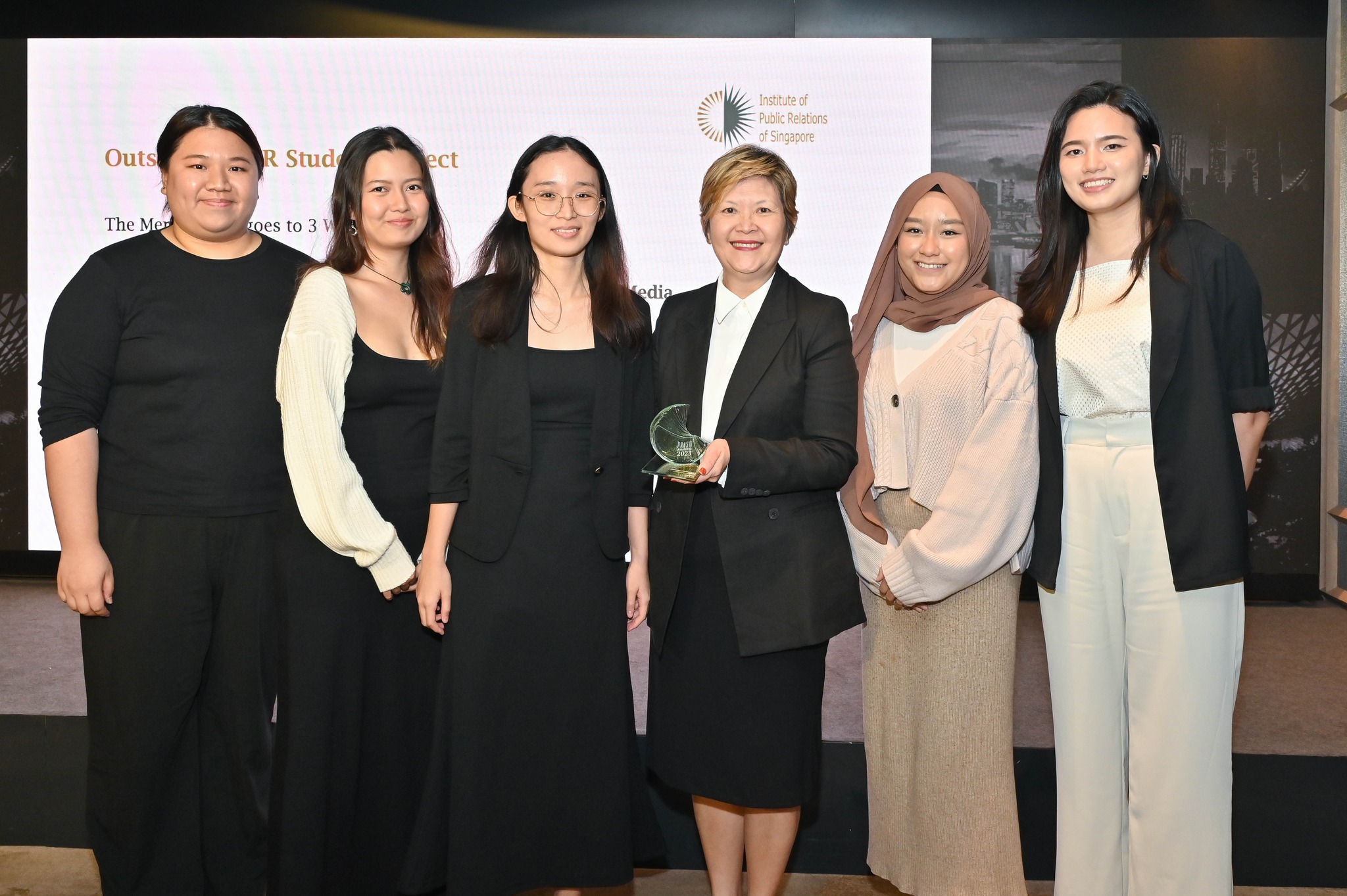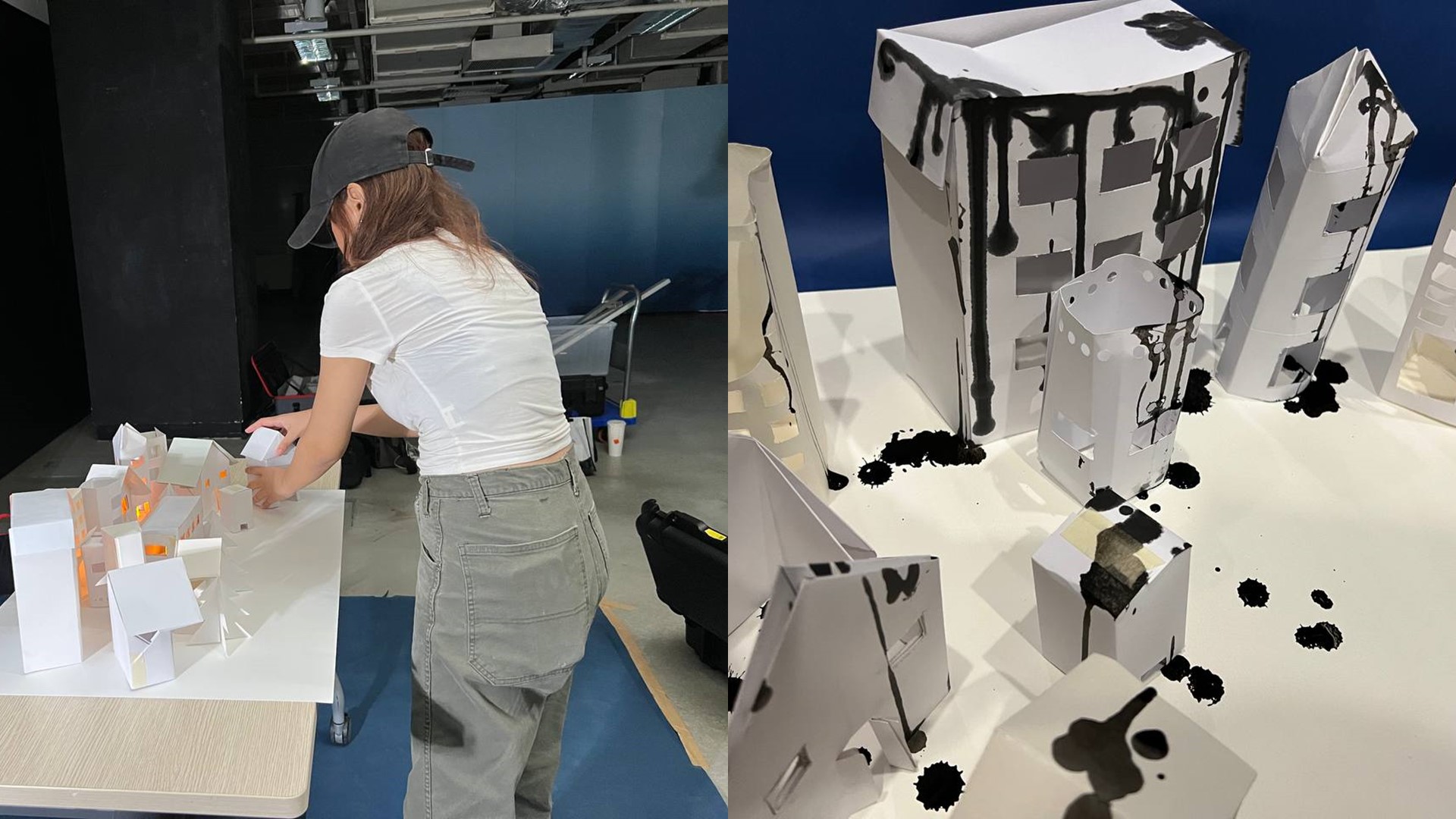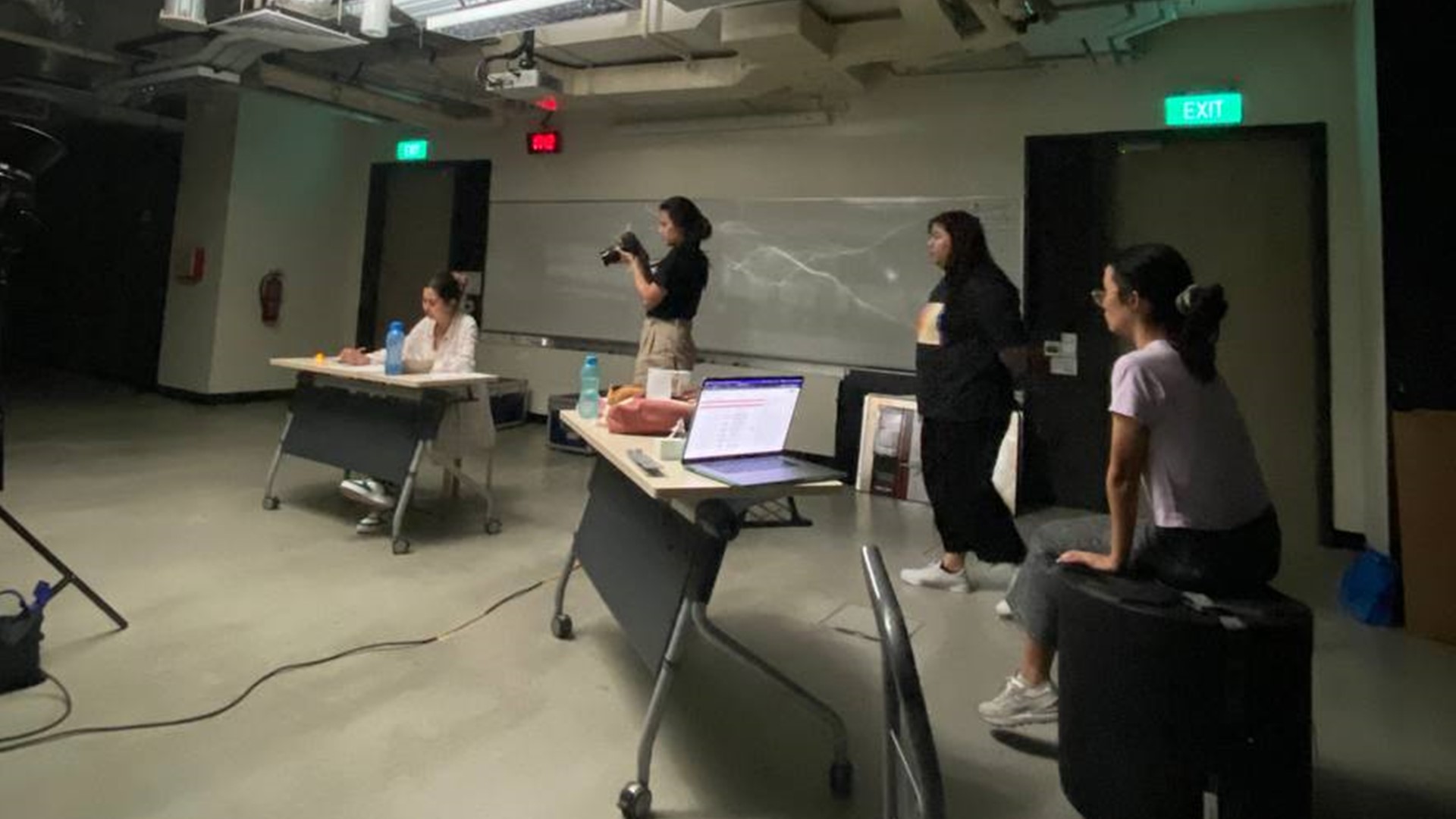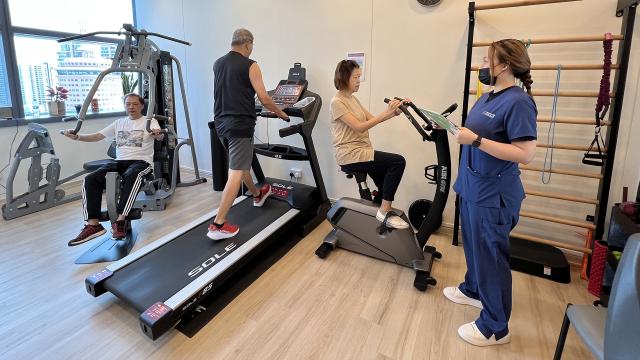A group of SITizens share their experience of embracing risks and experimentation, ultimately leading to clinching the IPRS PRISM Award.

From left: Gwen Koh Wen Hui, Augusta Lea Loi Pei Sze, Tan Shi Qin, Koh Juat Muay (President of Institute of Public Relations of Singapore (IPRS), Nur Atifah Hussain, April Leong Jia Yi (Photo: Institute of Public Relations of Singapore)
In November 2023, five undergraduates from SIT's Digital Communications and Integrated Media (DCIM) degree programme received a Merit Award from the Institute of Public Relations of Singapore (IPRS). This recognition was part of the biennial IPRS PRISM Awards, which honours excellence in communication practice.
The winning entry, 'Reverse the Future', not only secured recognition in the 'Outstanding PR Student Project' but is also a testament to the team’s dedication, creativity, and collaborative spirit. The talented team – consisting of April Leong (Director of Photography), Gwen Koh (Director), Tan Shi Qin (Editor), Augusta Lea Loi (Sound Designer), and Nur Atifah Hussain (Producer) – chose to deliver an immersive cinematic experience with elements of broodiness and nostalgia to invite the audience to immerse themselves in the narrative.
The genesis of their award-winning project started with the brief to raise awareness among the young about sustainability in the Wide to Tall Film Festival (WTF2) — Sustainable Living: Human + Planet. This project was part of their Media Production for Marketing module coursework.
The spark of inspiration for the video stemmed from Gwen's initial concept of delving into the past. She was inspired by the urgency of sustainability and online reverse challenge videos where people were doing things backwards. This concept resonated with the group, leading them to explore it further.
Visually Compelling Narrative
The team's resilience shone through as they overcame obstacles, reshaped their ideas, and pieced abstract elements into a visually compelling narrative.
“Our lecturer, Ms Chrissie Choo, was not entirely positive during the pre-production stage. Our proposed abstract and black-and-white approach seemed bare and minimal, and the feedback was demoralising for the team at first, but we ended up working harder to refine our concept,” said Gwen.
After further brainstorming through physical meetups and telegram group chats, they tweaked the concept and fixed the issues. “This led to better execution in the production and post-production stages, editing, colour grading, and screenings with the lecturer. The team took on the challenges with a more positive mindset, pushing through and achieving our end product,” said Gwen.

In the video, paper houses serve as poignant symbols of 'homes' amidst the impact of climate change. (Photo: SITizens)
April added, “Our initial idea was quite safe. Our lecturer pushed us to be more exploratory and try different things. The video ended up very different from our initial idea, where we wanted to stick with safer elements like prop-playing.”
Eventually, the video features two visuals – paper houses that symbolise the “homes” amidst the harmful effects of climate change, and a human cast portraying friends working on a film together. Both visuals are woven together to create an enigmatic atmosphere that keeps the audience in suspense. The climax is when the frame transitions from close-ups to slowly zooming out to reveal a studio full of people -- the creatives behind the paper houses.
Said Lea, “We believe that the project’s success was due to its authenticity and our use of abstract concepts. Elements such as breaking of the fourth wall which included scenes of the crew, and trending elements from social media, such as ASMR (autonomous sensory meridian response sounds), was used to create a sense of nostalgia, and the use of fast-paced, diverse shots helped to capture viewers’ attention.”
Dedicated to Excellence
The team’s commitment extended beyond the filming process, as they crafted visuals from scratch and coloured the video themselves.
While having video editing skills, the team was new to adapting a video to different formats and aspect ratios. The team needed to submit three versions: a one-minute Campaign Video that is 16:9, a 30-second Instagram reel that is 1:1, and a 15-second billboard video.
“We had to learn to adapt videos to different formats and aspect ratios. For example, we had to create extra visuals for the billboard video, which required collaboration and additional graphics from other team members,” shared Shi Qin.

The team experimented with various abstract concepts to captivate the audience's attention. (Photo: SITizens)
The road to success was paved with dedication, collaboration, and unwavering passion. Clinching the IPRS Award was a complete surprise, validating their efforts and instilling a newfound confidence in their capabilities. It has also ignited the team’s passion for exploring diverse roles within the industry.
“As undergraduates, we struggled with imposter syndrome, doubting whether our work would be recognised and unsure of its potential. We had to remind ourselves that our work could be recognised externally,” said Atifah.
“The IPRS award is a pat on the back. It means that others see the potential of our ideas and capabilities. It has helped our portfolio and exposed us to what is expected in the industry.”
Watch the award-winning video here.
![[FA] SIT One SITizen Alumni Initiative_Web banner_1244px x 688px.jpg](/sites/default/files/2024-12/%5BFA%5D%20%20SIT%20One%20SITizen%20Alumni%20Initiative_Web%20banner_1244px%20x%20688px.jpg)


